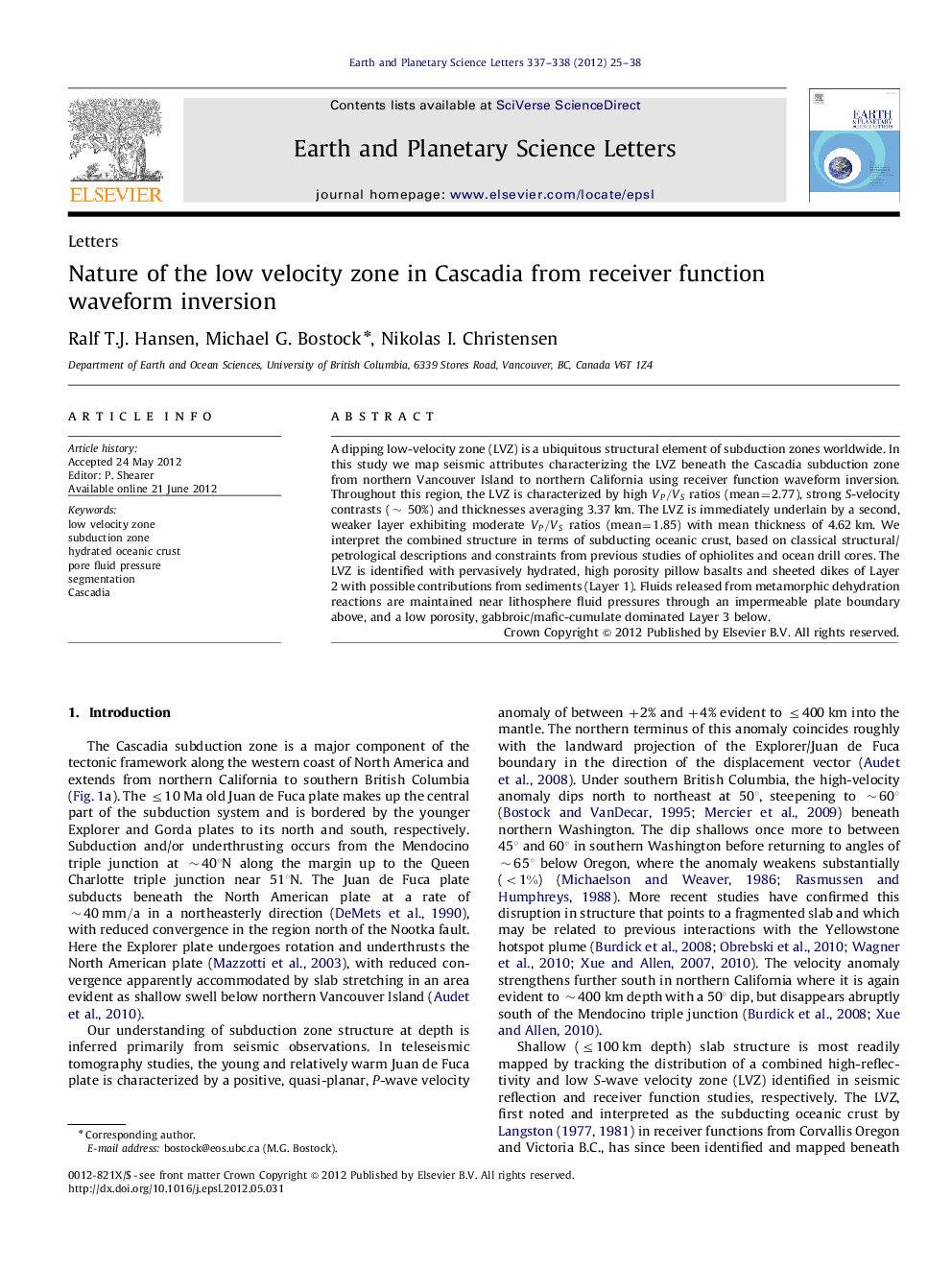| کد مقاله | کد نشریه | سال انتشار | مقاله انگلیسی | نسخه تمام متن |
|---|---|---|---|---|
| 4677438 | 1634802 | 2012 | 14 صفحه PDF | دانلود رایگان |

A dipping low-velocity zone (LVZ) is a ubiquitous structural element of subduction zones worldwide. In this study we map seismic attributes characterizing the LVZ beneath the Cascadia subduction zone from northern Vancouver Island to northern California using receiver function waveform inversion. Throughout this region, the LVZ is characterized by high VP/VSVP/VS ratios (mean=2.77), strong S -velocity contrasts (∼∼ 50%) and thicknesses averaging 3.37 km. The LVZ is immediately underlain by a second, weaker layer exhibiting moderate VP/VSVP/VS ratios (mean=1.85) with mean thickness of 4.62 km. We interpret the combined structure in terms of subducting oceanic crust, based on classical structural/petrological descriptions and constraints from previous studies of ophiolites and ocean drill cores. The LVZ is identified with pervasively hydrated, high porosity pillow basalts and sheeted dikes of Layer 2 with possible contributions from sediments (Layer 1). Fluids released from metamorphic dehydration reactions are maintained near lithosphere fluid pressures through an impermeable plate boundary above, and a low porosity, gabbroic/mafic-cumulate dominated Layer 3 below.
► We use receiver function waveform inversion to map a dipping, low-velocity zone (LVZ) within the Cascadia subduction.
► The LVZ is characterized by high Vp/Vs ratios and is underlain by a second, weaker layer.
► We interpret the two-layer structure as oceanic crust.
► The LVZ comprises metamorphosed sediments, pillow basalts and sheeted dikes; whereas the lower layer consists primarily of gabbro.
Journal: Earth and Planetary Science Letters - Volumes 337–338, 1 July 2012, Pages 25–38